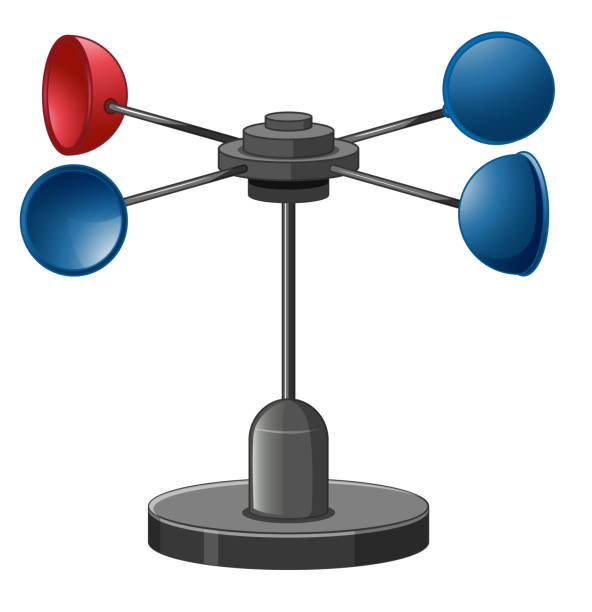Anemometer Innovations: The Latest Technology for Wind Speed Measurement
Anemometer Innovations: The Latest Technology for Wind Speed Measurement
Blog Article
Anemometers Introduced: Understanding Their Significance in Environmental Tracking and Safety Measures
The role of anemometers in environmental monitoring and safety measures is frequently ignored, yet their importance is undeniable. These instruments have a lengthy background rooted in scientific inquiry and technical innovations, progressing to end up being vital tools in different fields. From weather forecasting to aeronautics security, anemometers play a critical role in providing exact data that notifies decision-making processes and boosts total security. Recognizing the ins and outs of anemometers unveils a world of important insights that are fundamental to our understanding of the environment and the procedures we take to make certain security.
Background of Anemometers
The evolution of anemometers can be mapped back to the ancient civilizations where fundamental wind determining gadgets were first utilized. These very early wind measurement devices laid the structure for the development of a lot more sophisticated anemometers gradually. One of the earliest well-known anemometers was the hemispherical mug anemometer developed by Leon Battista Alberti in the 15th century. This design included four hemispherical mugs that accumulated wind energy, offering a dimension of its strength based upon the speed of rotation.
Over the years, advancements in technology led to the growth of even more contemporary anemometers, consisting of ultrasonic anemometers and laser Doppler anemometers, providing raised precision and efficiency in determining wind rate and direction. The history of anemometers showcases a remarkable trip of technology and development in the field of meteorology.
Kinds Of Anemometers
Throughout the area of meteorology, numerous types of anemometers have been created to accurately determine wind rate and direction. Sonic anemometers utilize ultrasonic signals to measure wind speed and direction properly. Hot-wire anemometers run based on the concept that the cooling result of wind on a warmed cord is symmetrical to the wind rate.
Applications in Meteorology
Having actually reviewed the numerous sorts of anemometers utilized in meteorology for measuring wind speed and direction, it is vital to discover their sensible applications in the area. Anemometers play an essential role in meteorology by offering real-time and precise information on wind conditions (anemometer). Meteorologists utilize anemometers to keep an eye on wind speed and direction to forecast weather patterns, issue warnings for severe climate occasions like storms, storms, and tornadoes, and assess atmospheric conditions for aeronautics safety
In meteorology, anemometers help in recognizing neighborhood and regional wind patterns, which are essential for anticipating weather condition changes and figuring out weather patterns. These devices are additionally utilized in research study to study microclimates, city warm islands, and air pollution diffusion. In addition, anemometers are used in farming to enhance crop monitoring practices, such as watering and pesticide application, based upon wind conditions.
Importance in Air Travel Security
An important aspect of ensuring air travel safety depends on the meticulous surveillance of wind problems utilizing anemometers. Anemometers play an essential duty in aviation by giving real-time data on wind rate and instructions, aiding pilots in making educated decisions during trip, take-off, and landing. Strong and uncertain winds can significantly affect airplane procedures, making it important for air travel authorities to count on accurate wind measurements to make sure the safety and security of passengers and team.

In the dynamic atmosphere of air travel, where even small modifications in wind rate and direction can have profound results, anemometers stand as important devices for advertising safe and secure flight.
Duty in Environmental Research Study
Anemometers play a critical duty in ecological study by giving essential data on wind speed and direction. By properly gauging wind features, anemometers aid scientists assess the activity of toxins in the air, examine the effect of industrial discharges, and forecast the spread of impurities in the setting.


Final Thought
In conclusion, anemometers have actually played an essential function in environmental surveillance and security procedures. Understanding the value of anemometers is crucial for precisely gauging wind speed and instructions, which is important for forecasting weather condition patterns, ensuring risk-free aeronautics operations, and performing environmental research studies.
One of the earliest known anemometers was the hemispherical mug anemometer invented by Leon Battista Alberti in the 15th century. Over the years, improvements in modern about his technology led to the development of more contemporary anemometers, including ultrasonic anemometers and laser Doppler anemometers, providing raised accuracy and performance in gauging wind speed and direction. Hot-wire anemometers operate based on the concept that the cooling effect of wind on a heated cable is symmetrical to the wind rate. Meteorologists make use of anemometers to check wind speed and direction to anticipate climate patterns, concern cautions for extreme weather events like tornados, hurricanes, and tornadoes, and examine climatic problems for aeronautics safety.
Understanding the importance of anemometers is necessary for properly gauging wind rate and instructions, which is vital for predicting weather patterns, guaranteeing risk-free air travel operations, and conducting environmental studies. (anemometer)
Report this page